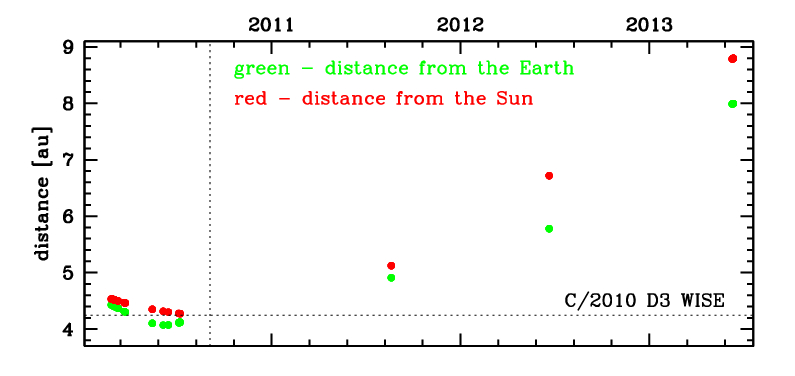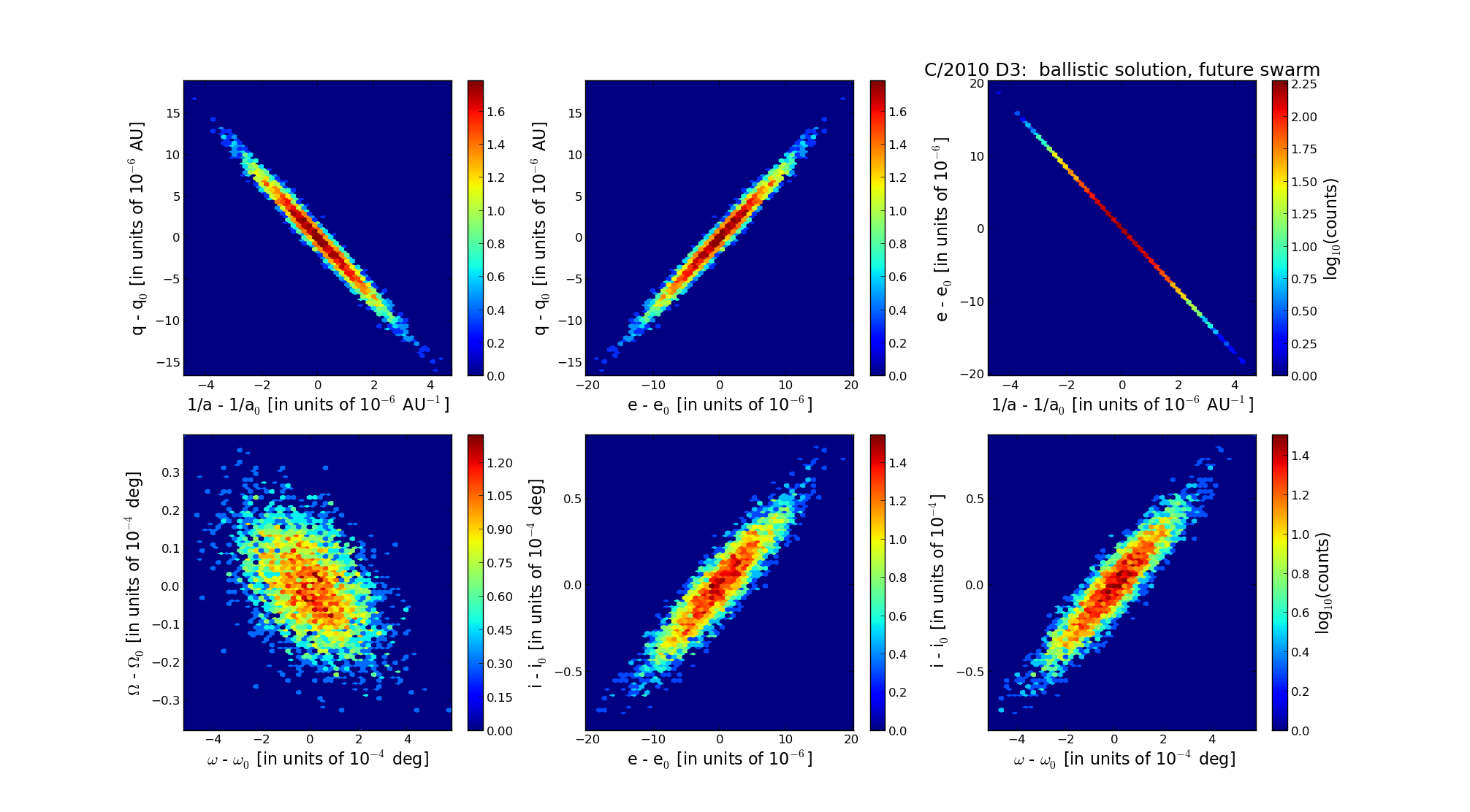C/2010 D3 WISE
more info
C/2010 D3 was discovered in images from the Wide-field Infrared Survey Explorer (WISE) satellite on 26 February 2010.
This comet made its closest approach to the Earth on 7 June 2010 (4.070 au), about 3 months before perihelion passage (see figure).
Solution given here is based on data spanning over 3.3 yr in a range of heliocentric distances: 4.54 au – 4.248 au (perihelion) – 8.80 au.
This Oort spike comet suffers small planetary perturbations during its passage through the planetary system that lead to a more tight future orbit (see future barycentric orbit).
See also Królikowska 2014 and Królikowska and Dybczyński 2017.
This comet made its closest approach to the Earth on 7 June 2010 (4.070 au), about 3 months before perihelion passage (see figure).
Solution given here is based on data spanning over 3.3 yr in a range of heliocentric distances: 4.54 au – 4.248 au (perihelion) – 8.80 au.
This Oort spike comet suffers small planetary perturbations during its passage through the planetary system that lead to a more tight future orbit (see future barycentric orbit).
See also Królikowska 2014 and Królikowska and Dybczyński 2017.
| solution description | ||
|---|---|---|
| number of observations | 97 | |
| data interval | 2010 02 24 – 2013 06 11 | |
| data type | perihelion within the observation arc (FULL) | |
| data arc selection | entire data set (STD) | |
| range of heliocentric distances | 4.54 au – 4.25 au (perihelion) – 8.8 au | |
| detectability of NG effects in the comet's motion | NG effects not determinable | |
| type of model of motion | GR - gravitational orbit | |
| data weighting | YES | |
| number of residuals | 187 | |
| RMS [arcseconds] | 0.52 | |
| orbit quality class | 1a | |
| orbital elements (barycentric ecliptic J2000) | ||
|---|---|---|
| Epoch | 2316 10 07 | |
| perihelion date | 2010 09 04.42511700 | ± 0.00101300 |
| perihelion distance [au] | 4.24461582 | ± 0.00000435 |
| eccentricity | 0.99919099 | ± 0.00000502 |
| argument of perihelion [°] | 304.568634 | ± 0.000138 |
| ascending node [°] | 255.203753 | ± 0.000010 |
| inclination [°] | 76.374021 | ± 0.000023 |
| reciprocal semi-major axis [10-6 au-1] | 190.60 | ± 1.18 |
| file containing 5001 VCs swarm |
|---|
| 2010d3a5.bpl |

